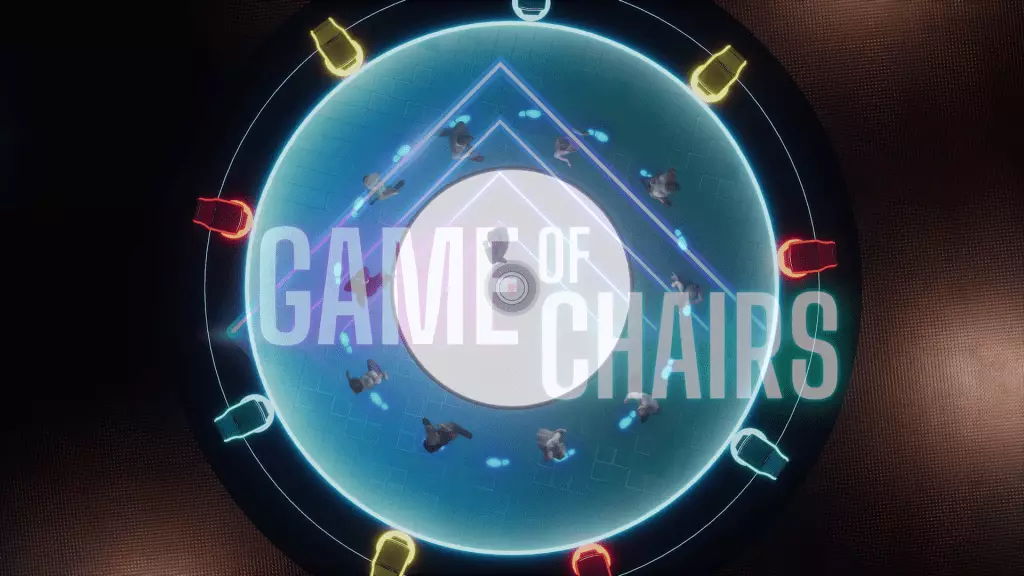In the ever-evolving landscape of television entertainment, Banijay Entertainment recently unveiled a novel format dubbed “Game of Chairs.” With its roots rooted in the age-old classic of musical chairs, this adaptation infuses a refreshing layer of engagement by combining nostalgia with competition. As audiences increasingly crave innovative entertainment experiences, the strategic launch of this show evokes both excitement and skepticism regarding its potential longevity.
Game of Chairs introduces an intriguing twist by inviting ten contestants to navigate a battle of wits and agility around nine chairs—a setup that is not just about avoiding elimination but engaging viewers in an emotional rollercoaster. The more elaborate mechanics—from battling eliminated players to facing the so-called Master Chair—suggest a thoughtful expansion of a simple game; however, one has to wonder if this will resonate with audiences tired of recycled formats or if it’s merely another attempt to milk nostalgia.
Marketing Nostalgia: A Double-Edged Sword
Macarena Rey, CEO of Shine Iberia, asserts that the “dynamic blend of game show and nostalgia” elevates the excitement surrounding the show. This claim raises crucial questions about the strategy of relying heavily on nostalgia to captivate viewers. While nostalgia can serve as a powerful marketing tool, appealing to viewers’ memories can quickly backfire if the execution fails to live up to past standards. In our current climate, it’s essential to innovate rather than imitate, a sentiment echoed among many critics.
Can this nostalgia-driven concept truly thrive in a market already saturated with similar shows? One must contemplate whether the production is challenging traditional forms or simply offering stylized familiarity. People often seek fresh narratives, and while Game of Chairs aims to leverage its historical significance, the burden of distinction lies heavy on its shoulders.
Switching gears from the world of game shows, BBC Studios made headlines by hiring Robi Stanton as the new streaming chief for its operations in Australia and New Zealand. Stanton, an established figure with prior experience at Warner Bros and CNN, represents a significant shake-up within the BBC’s commercial arm. As the industry sees a relentless push toward digitization and streaming, Stanton’s candidacy brings hope that BBC Studios will adopt a more robust approach to this rapidly shifting landscape.
However, one wonders about the strategic objectives underlying this bold move. BBC Studios has recently launched several FAST channels and has seen promising partnerships like those with Nine Network. Yet, it remains to be seen if Stanton’s Federal vision will lead to innovation or if this transition will merely shore up existing partnerships without creating forward momentum. The dynamic nature of media consumption necessitates aggressive strategies, and only time will tell if BBC’s decisions are carving a new path or merely an adjustment to present expectations.
On a separate note, the cinematic world is buzzing with the impressive performance of the film “Sankrantiki Vasthunam” on ZEE5, which shattered viewership records soon after streaming. A staggering 13 million viewers in just 12 hours following its release illustrates an escalating demand for high-quality content. This type of rapid consumption reflects changing viewer behaviors, where audiences are more willing to engage with content in a on-demand format, rather than sticking to traditional dissemination channels.
The film’s plot—a blend of drama and comedy revolving around a retired cop—strikes a balance between relatability and entertainment, which has proven crucial to its success. Significantly, the ability for a regional film to garner such attention suggests the rise of platform-specific viewing as a critical player in shaping media consumption. The notion that centralized streaming services can elevate regional content adds a captivating perspective on how marketplace dynamics are shifting, demanding a renewed focus on diverse storytelling.
Amidst these transitions, an urgent question arises: Are these victories an indication of lasting changes in consumer preferences or merely passing fads? The winds of change blow swiftly in the entertainment industry, and adapting to them is both an art and a necessity.


Leave a Reply